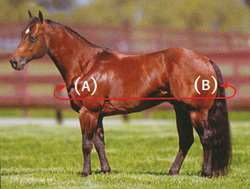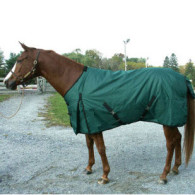
Horse Blankets
Posted by Grange Co-op on 3rd Oct 2017
To Horse Blanket or Not to Horse Blanket... that is the question that we get asked every year. When a horse owner is considering whether or not to blanket their horse there are several things to take into consideration.

We as humans tend to put our feelings into our horse, therefore if we're cold they must be. So we put on a jacket and we put one on our horse. However, when we are standing out in the rain we know enough to get out of the rain and take off our jacket to dry. Our horses don't. Horses standing out in a wet pasture do not seem to see any reason to get under cover and they certainly can't remove their blanket. So it is important that we make sure if we put blankets on them we have a place to lock them in, out of the rain. A rain soaked blanket is actually worse than leaving them without a blanket. When left without a blanket a horse shivers and this burns calories that help keep the horse warm. A wet blanket will sap the horse's body heat right out of them, leaving the horse chilled and the horse will most likely get sick. So no cover, no blanket is the rule of thumb, unless you have a waterproof blanket. Be sure, however, to check on whether a blanket is waterproof or just water resistant. There are a few waterproof blankets out there such as Weatherbeeta which may cost more, but can be worth it in areas with frequent rain.
Most canvas blankets are water resistant and can withstand a light rain. Spraying them with Scotch Guard helps them resist water longer. Quilted nylon blankets should be used in the stalls only. When measuring your horse you want to start at the center of the chest and go around the point of the shoulder along the side around the hip to the tail.

The amount in inches is the horse's size, 72" = size 72. Always jump up a size when dealing with uneven numbers like 77' = size 78. A little larger is better. The blanket won't be stressed as much when the horse is getting up and down if it is a little bit big. If you decide to use a hood, be sure the hood is lined with satin or nylon along the mane so it won't rub the horse's mane out. Be sure you connect the hood to the blanket securely.
Overall, blanketing requires thought and some work. However, the benefit of the blanket is to keep the horse's hair slick. And the peace of mind from knowing we're doing all we can to keep them warm and cozy throughout the winter seems to outweigh the extra effort of using a blanket.
